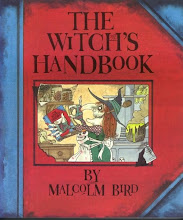 Jack, an Irish blacksmith, had the misfortune of running into the Devil in a pub on Halloween. Jack had drank a bit too much that evening and the Devil thought him easy prey, but the clever trickster made a bargain with the Devil. In exchange for one last drink, Jack offered up his soul. Jack didn't want to pay for his drink, so he convinced the Devil to turn himself into a sixpence that Jack could use to buy their drinks. The Devil changed his form to make payment to the bartender, but Jack pocketed the coin in a bag with a silver cross with the knowledge that the cross would prevent the Devil from changing back. Once in his purse, Jack only freed the Devil after he agreed not to claim his soul for ten years.
Jack, an Irish blacksmith, had the misfortune of running into the Devil in a pub on Halloween. Jack had drank a bit too much that evening and the Devil thought him easy prey, but the clever trickster made a bargain with the Devil. In exchange for one last drink, Jack offered up his soul. Jack didn't want to pay for his drink, so he convinced the Devil to turn himself into a sixpence that Jack could use to buy their drinks. The Devil changed his form to make payment to the bartender, but Jack pocketed the coin in a bag with a silver cross with the knowledge that the cross would prevent the Devil from changing back. Once in his purse, Jack only freed the Devil after he agreed not to claim his soul for ten years.Ten years later, the Devil met Jack walking on a country road and told him that he was there to collect his soul. Jack, feigned compliance, but asked the Devil if he would first climb an apple tree and get him an apple. The Devil, having nothing to lose, climbed the tree, but as he reached for the apple, Jack pulled out his knife and carved the sign of the cross in the tree's trunk. The Devil was unable to come back down until he had agreed never to claim Jack's soul.
Some years later, Jack died and went to Heaven. But he was dismissed from St. Peter's gate because he was too much of an unsavory figure to allow in. He then went to Hades, but the Devil was bound never to claim his soul, and so would not allow him to enter. Instead, he sent him away with only a burning ember to light his way. Jack put the coal into a carved-out turnip and has been doomed to roam the Earth in darkness ever since. The Irish began to refer to his damned soul and ghostly light as "Jack of the Lantern," and then, simply "Jack O' Lantern."
In Ireland and Scotland, people began to make their own versions of Jack's lanterns by carving scary faces into turnips or potatoes and placing them into windows or near doors to frighten away Stingy Jack and other wandering evil spirits. In England, large beets are used. Immigrants from these countries brought the Jack O' Lantern tradition with them when they came to the United States. They soon found that pumpkins, a fruit native to America, make perfect Jack O' Lanterns.






































































